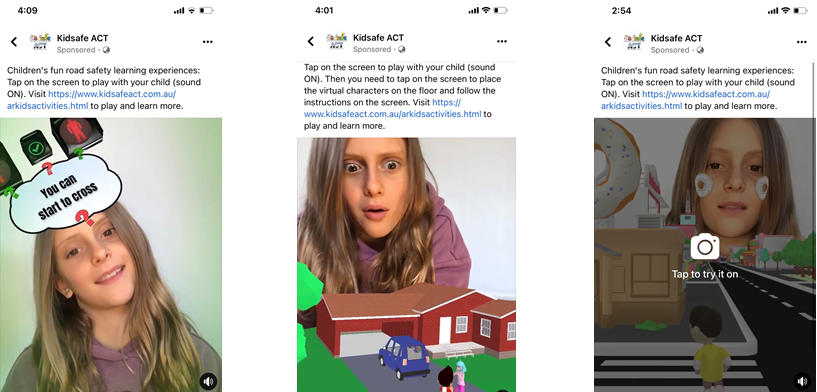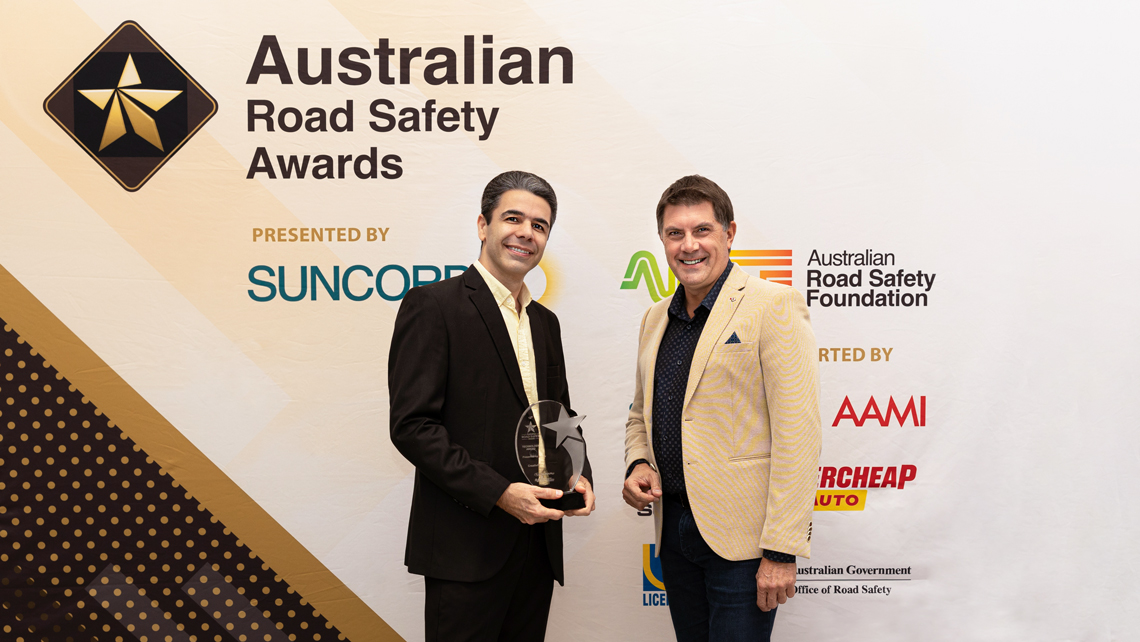Get in Touch
Email Address
hello@creativitek.com
Phone Number
+61 423 493 386

Idea
To use social media and augmented reality (AR) technology to engage parents in children’s road safety education. We developed a proposal to apply for ACT Government's Road Safety Fund.
Funded by
The Government of the Australian Capital Territory, also referred to as the Australian Capital Territory Government or ACT Government, is the executive authority of the Australian Capital Territory, one of the territories of Australia.
Objectives
- To educate children aged 5-9 about six main road safety subjects
- To stimulate conversations between parents and their children about safe road behaviours
- To encourage parents to be good role models for their children when it comes to safe road behaviours
- To attract more attention to the social pages and activities of Kidsafe ACT and to support the previous funding the ACT Road Safety Trust gave Kidsafe ACT to develop information pages on their website on pedestrian safety
Solution
The following services were provided to achieve the goals:
1. Social media augmented reality effects: We developed seven social media augmented reality effects to educate children aged 5-9 about the following road safety subjects:
- Traffic lights
- The safe place to cross the road
- The safest place to sit in the car
- Use “stop, look, listen and think” when near or crossing roads
- Treat the driveway like a road, not a play area
- Always hold hands when crossing the road
Different types of augmented reality experiences (e.g., face effect, AR portal, world AR, quiz, AR game) were developed to provide fun learning experiences and achieve project objectives effectively.

2. Augmented reality ads on social media: We created social media Facebook ads and promoted them.

3. Augmented reality colouring page: We created an augmented reality colouring page to allow children to learn about safe road behaviours in a unique and creative way. A colouring competition was also organised to promote the project and encourage school goers to participate in the project.
4. We generated QR codes and used them in different ways to expand the reach of the project. For example, we developed an augmented reality colouring page and ran a colouring competition in the ACT region. We put the QR codes at the back of the colouring page and all participants were able to scan QR codes to try the learning experiences. The animation that came alive from the colouring page was also an educational animation about road safety. We also put the QR codes on banners which were used in different places, for example in South.Point Tuggeranong shopping centre. Each banner had a specific theme and concept focus.

Outcome
Meta’s (previously known as Facebook) ads Manager provided us with the figures related to our boosted Facebook AR ads. The results showed that AR Facebook ads reached 200,351 people and got 719,296 impressions and 3,218 clicks. As expected, augmented reality ads reached out to a large number parents in a short time frame, and the number of engagements (clicks) seems to be acceptable considering the amount of money we spent and the time period.
When an augmented reality experience is available on social media, any Facebook and Instagram users around the world can find and try them. The results show that so far (Monday, 21 November) the AR learning experiences have been opened 1,221 times by social media users in Australia and about 9,879 times by people from around the world. The average time each experience was tried was 13 seconds. People took about 956 photos and videos of the gamified learning experiences.
Ten parents who tried AR experiences with their kids completed the feedback form on the project’s webpage. We then telephone interviewed them to discuss their answers further.
All interviewees said that their kids had fun and enjoyed the AR part of the learning experiences. As reported by the interviewees, their children learned new things about road safety from some of the AR experiences, and some AR experiences simply reinforced what children already knew, depending on the child’s age and level of road safety knowledge. Interviewees reported that the experiences opened up a bit of conversation in the family and gave the children the opportunity to ask questions. The research participants said that some of the experiences were more fun and easier to use (for example, the road safety game) but some were a bit hard to understand or use. Five out of ten parents said that their children enjoyed the road safety game the most.
An Award-Winning Project
At the 12th Annual Australian Road Safety Awards held at Parliament House in Canberra, CreativiTek was honored with the prestigious "Technology Award" for this project. These awards, presented by Suncorp Group, are an initiative of the Australian Road Safety Foundation, aiming to recognize exemplary road safety projects and their achievements.
